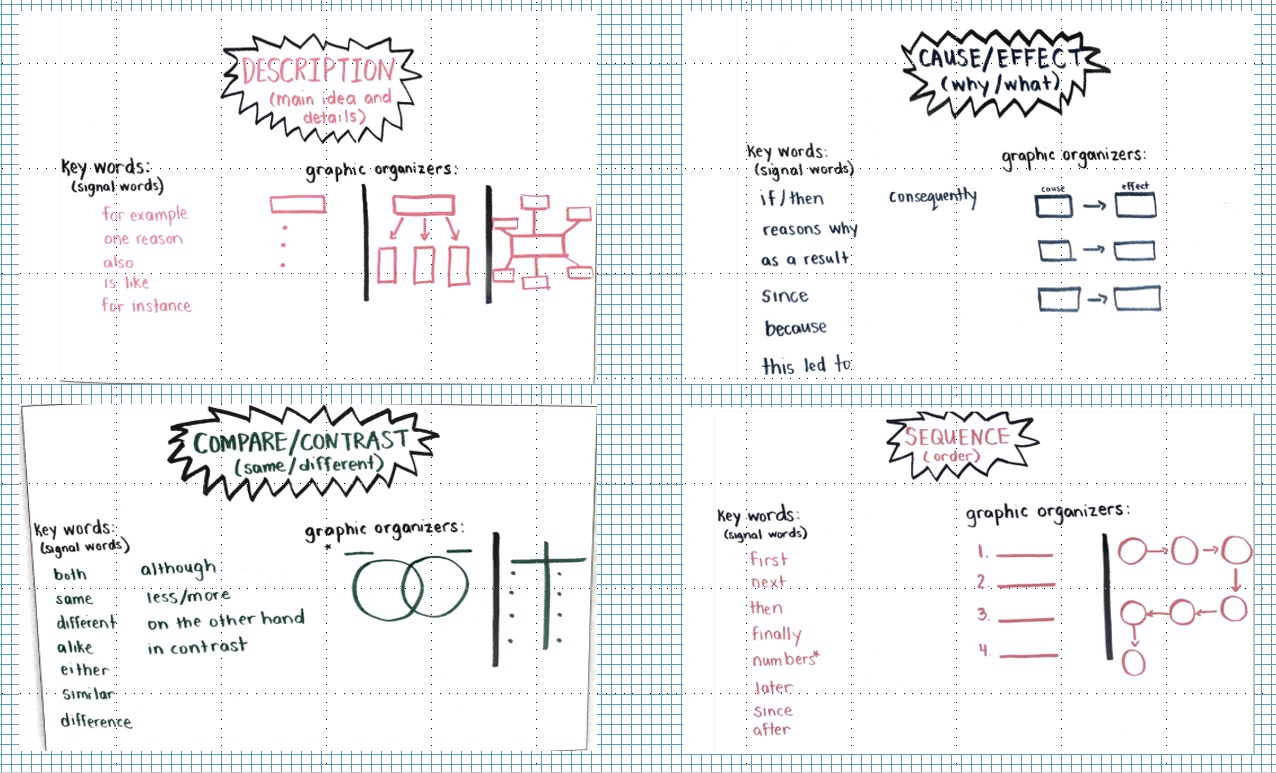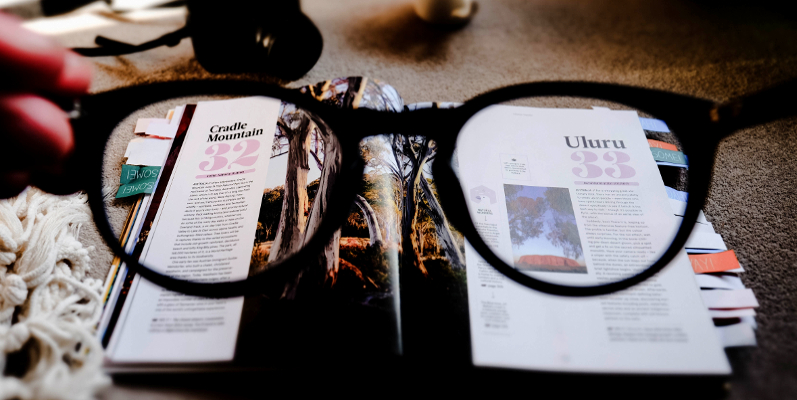If we want students to fully comprehend nonfiction text, we must provide powerful instruction in the types of text structures authors typically use.
In the past I gave a gentle nod to the text structure unit, but lately I’m rethinking my mild indifference.
Non-fiction text structures guide the reader in knowing how an author organizes information in an expository text. Readers use knowledge of text structure to assist in monitoring comprehension of the specific content presented in the selection. Identifying which structure(s) the author has employed helps the reader to construct the appropriate mental maps that can lead to deep understanding.
As readers interact with the text to construct meaning, their comprehension is facilitated when they organize their thinking in a manner similar to that used by the author. Readers who struggle with text comprehension often do so because they fail to recognize the organizational structure of what they are reading, and they are not aware of cues that alert them to particular text structures. (Cochran and Hain)
I’m learning it’s worth being more intentional when teaching text structures.

John Hattie posits that to retain knowledge and move to deep representation, learners must build layers of new knowledge, understanding and relevance over time. Eric Jensen, in his book, Engaging Students with Poverty in Mind, shares five actions that build deep understanding and facilitate the building of layers as Hattie proposes. Jensen’s five actions:
Understand Labels
Discover the Properties
Develop Contexts and Meaning
Get It Right
Learn to Transfer
In thinking deeper about the process of teaching text structures, we would be wise to layer the learning by intentionally using Jensen’s five actions.
Understand Labels—begin by sharing with students the types of text structures authors most often use.
Discover the Properties—students should be clear on the defining features of each structure type and possible signal words.
Develop Contexts and Meaning—giving students mental models to represent the author’s organization of the content and personal relevance to the content is critical for comprehension.
Get It Right—make a commitment to supporting students to not only retain the information, but to know explicitly what an accurate model looks like. This is most effectively done by providing “exemplars”. Rubrics (either teacher or student created) lead students in being able to identify or create “clearly described models of quality” (Jensen).
Learn to Transfer—students must be able to apply their new knowledge in a variety of other contexts. Giving kids an opportunity to self-select nonfiction texts and employ their new knowledge of text structures to identify and then evaluate the author’s use of those structures leads to transfer. The most powerful way to facilitate transfer is to challenge students to create their own nonfiction writing with one or more text structures.
I’d like to propose an additional action to accompany Jensen’s five actions.
Commit to Action—deep understanding, taken to its most salient level, requires engagement or encounter. We must teach our students to ask “What’s the author doing here? “(in terms of organizing the content in a compelling way) “Why might the author be doing this?” “What should I do now?” When we read we should be changed in some tangible, obvious way. When I read an author’s account of water shortage in a Third World country, I should be moved to take action. I may choose to give money, raise awareness, or start a project (and solicit support from others) to bring help and effect change.
My deeper foray into planning for teaching text structures has also led me to discover that authors many times use more than one type of text structure in their writing. In an article I read just today, the author used description, cause and effect, problem and solution; three different structures all in the same nonfiction piece.
If that’s the case, then we must model for students how we identify and then adjust the way we monitor our comprehension all within the “borders” of one article. We must also make certain that students observe teacher modeling on how to write nonfiction selections that include more than one structure. And we need to provide plenty of opportunity for students to experiment themselves with creating compelling text pieces that involve the use of multiple text structures.
No more cursory text structure units on my watch.











LOVE your addition of “commit to action.” So smart. So critical. Secondary textbooks are always blending text structures. Often each paragraph can change so it’s incredibly confusing to students.
It’s ultimately why we read, don’t you think? We read to be changed–a change of heart due to compelling themes an author has put forth, change in thinking (new information), change in my actions due to either of the aforementioned. This is the very reason that I believe being a teacher of reading is one of the noblest professions. Together, with our students, we brave new and challenging texts that change us, we hope, forever.
So appreciate you reading and responding here on my blog. I always learn from you, Fran. #grateful